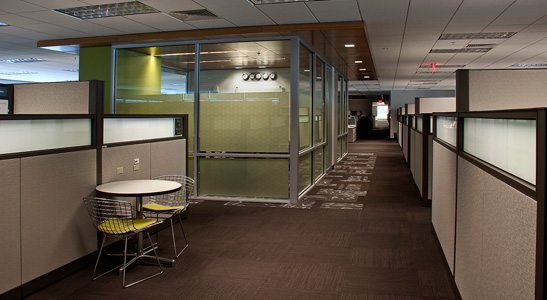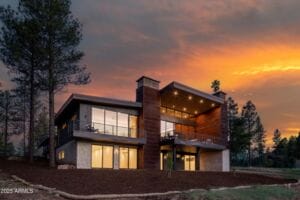Space crunch
Office Makeovers: Change in workplace dynamics has office tenants doing more with less
If you think the recession is killing the corner office, you may be partially correct.
Younger-worker preferences and emerging technologies, including cell phones, laptops and video conferencing, are also behind a monumental shift in workplace dynamics that has business owners doing more with less – space, that is — with office makeovers. In some cases, office tenants whose leases are up for renewal are finding it possible – even preferable – to get by with 15-25 percent less space than they needed even 10 years ago.
The trend is welcome news for budget-conscious business owners, based on the fact that the economy has put the squeeze on Corporate America and that real estate, and its related expenses, are traditionally among a company’s largest capital expenses.
Although private offices and the ubiquitous cubicle aren’t likely to ever completely disappear from the workplace landscape, they certainly are shrinking. Cubicles that once measured 10-feet-by-8-feet per employee now average 7-feet-by-6-feet. Corporations that typically outfitted their top executives in 300 SF offices have cut back to spaces that are half that size, if the office floor plans include offices at all.
As executives strive to reduce their real estate footprint and make workplaces more communal, office makeovers are featuring fewer private offices and more common areas. Designers are maximizing the smaller spaces with compact standardized workstations, docking stations where employees who spend most of their time working remotely can plug in when they’re in the office, comfortable “teaming” rooms where small groups can work together and reduced storage spaces formerly devoted to massive paper files.
One of the biggest factors influencing the evolving shape of the workplace is the invasion of the millennial generation, the workforce’s youngest members. Raised on group sports and family activities, these younger workers are bringing their team-minded orientation into the workplace, and in turn, influencing office layouts that are more integrated than in the past.
Whereas the baby boomers embraced the hierarchical formality of traditional offices as a status symbol, younger workers view the four walls as isolating. Equipped with a laptop, a cell phone and a pen, this new breed of employee is as comfortable working from the corner coffee shop as from a desk, and doesn’t need a lot of office real estate to be productive.
Technology advances also are having a major impact on office-space requirements. Laptop computers have eliminated the need for large cubicles housing a desktop computer and a large monitor. Digital file storage has replaced the need for paper files that once occupied precious space. And videoconferencing has made it possible for workers to stay in touch without actually having to occupy a spot in the office.
Technology even has reduced the personnel requirements in some companies, making it possible for the business to operate with fewer workers and to cut its overall square-footage needs.
Experts predict we are on the front end of these workplace trends and that as more Millennials enter the workforce, space allocations could dip to a mere 50 square feet per employee by 2015. In short, space sharing will become bigger and cubes will become smaller.
In the meantime, if you are considering office makeovers or looking for ways to do more with less (space), here are a few pointers:
- Try to be sensitive to the needs of the different generations operating together in your workplace. Change can be painful, especially for some people, but by keeping an open mind, everyone can benefit in some way from the factors influencing new trends in office-space design.
- Use technology to your advantage. Use it to create more physical space (digital file storage and shared workspaces) and to and to improve worker productivity.
- Learn to utilize multifunction rooms to reduce square footage and increase productivity. The boardroom can also double as a training room and a social gathering area.
- Realize that these trends are not only useful for reducing capital expenditures, they also can be helpful in attracting the best and brightest workers once the economy returns to full speed.
For more information about the trending of office makeovers, contact Susan LaGanke, managing director of CB Richard Ellis’ project management division in Arizona and Latin America. She can be reached at susan.laganke@cbre.com or 602-735-5555.





